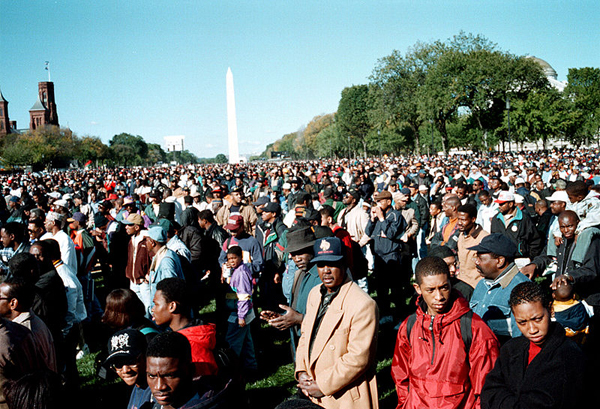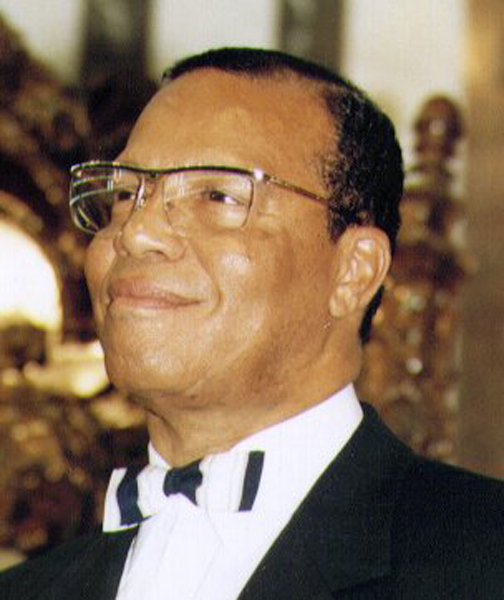SECTION 07
The Million Man March
In response to the issues exposed in the LA riots, as well as other issues affecting the growing middle class black community, in 1994, Louis Farrakhan, the leader of the Nation of Islam (NOI), and former NAACP Executive Secretary Benjamin Chavis developed a plan to hold a national demonstration focused largely on the plight of African American men. After Elijah Muhammad’s death in 1975, his son Wallace took control of the NOI and immediately steered it away from the Black Nationalist principles and racial separatism of his father. Loyal to Elijah’s perspectives, Farrakhan broke from the organization and reconstituted the “old” Nation of Islam around his own leadership. The concept of the march, projected as “a day of atonement and reconciliation,” sparked tremendous enthusiasm throughout black America, as well as bitter controversy.
On 16 October 1995, close to a million participants poured into the Washington Mall from all over the United States. It was without question the largest single gathering of black people in U.S. history. Studies indicated that the participants were mostly of the middle class, older, and had a proportionally higher level of education than black men in general. The march was, for many, an emotional event that symbolized the coming together of black men across generations, rededicated to a common social and political project of empowerment. Speakers, who ranged from religious leaders to community activists, addressed issues of education, racism, welfare, and other community issues. This perhaps explains the popular slogan in support of the mobilization, “Farrakhan may have called the march, but the march belongs to us.”
Black feminists condemned the patriarchy and homophobia prevalent in much of the mobilization’s literature. Others praised the objective of the march but criticized Farrakhan for anti-Semitism and racism. Still others objected to the emphasis on “atonement” at a time when Congress was eliminating programs designed to help the black community. Nevertheless, it had an important impact on raising awareness about the continued struggle against structural inequalities. Within the next year, over 1.5 million black men registered to vote.
Related Resources
Louis Farrakhan.
Louis Farrakhan, leader of the nation of Islam and former NAACP Executive Secretary Benjamin Chavis developed a plan to hold a national demonstration focused largely on the plight of African American males.
Source: United States Federal Government.



